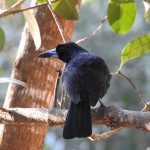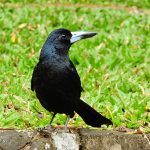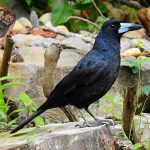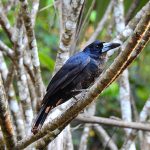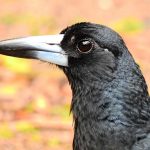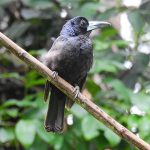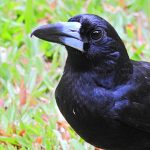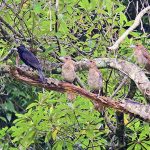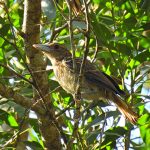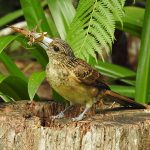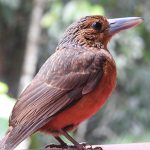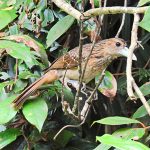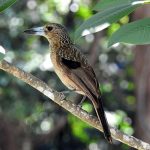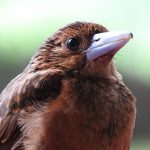BLACK BUTCHERBIRD
The Black Butcherbird is a member of the Artamidae family, known for their robust bodies and hook-tipped beaks – a feature that hints at their carnivorous diet. They are medium-sized birds, typically around 35 cm in length, and have a commanding presence that belies their size.
Found predominantly in the northern regions of Australia, its range extends from the Kimberley region in Western Australia, across the Top End of the Northern Territory, through to Queensland, and down the eastern coast as far as the north-eastern parts of New South Wales.
This bird favours a variety of habitats, from mangroves and coastal forests to riverine woodlands and even urban areas, where it has adapted surprisingly well to human presence. The Black Butcherbird’s adaptability to different environments is a testament to its resilience and intelligence.
In Queensland, particularly, they are often spotted in the rainforest clearings and edges, where the dense canopy gives way to open spaces – ideal for these birds to hunt and survey their territory. The Daintree Rainforest, a biodiversity hotspot, is one such place where the Black Butcherbird thrives, its haunting calls echoing through the ancient trees.
One of the most interesting aspects of the Black Butcherbird is its hunting technique. They are known to impale their prey on sharp objects such as thorns, twigs, or even barbed wire. This macabre behavior has earned them their name, as it resembles a butcher hanging up its wares. This larder not only serves as a way to store food but also to attract mates – a pantry of protein to showcase their prowess.
Their diet is varied and includes insects, lizards, small mammals, and even other birds. With their strong beaks, they are adept at dismantling their prey, making the most of the nutritional value they offer.
Vocalisation is another remarkable trait of the Black Butcherbird. Their calls are complex and melodious, often described as flute-like. These sounds are not just for communication but also play a role in their social structure, as they live in family groups and establish territories that they defend vociferously against intruders.
Breeding season brings more fascinating behaviors to light. The Black Butcherbird constructs a bowl-shaped nest where the female will lay two to three eggs. Both parents share the duty of feeding the chicks, which are born altricial – that is, completely dependent on their parents for warmth and food.
Like all wildlife, they are susceptible to the broader challenges of habitat destruction and climate change. It’s important for us to maintain healthy ecosystems to ensure that these fascinating birds, along with countless other species, continue to thrive.
For those who have the chance to witness these birds in their natural habitat, it’s an encounter that underscores the rich tapestry of Australian wildlife and the importance of conservation efforts to preserve it for future generations.

